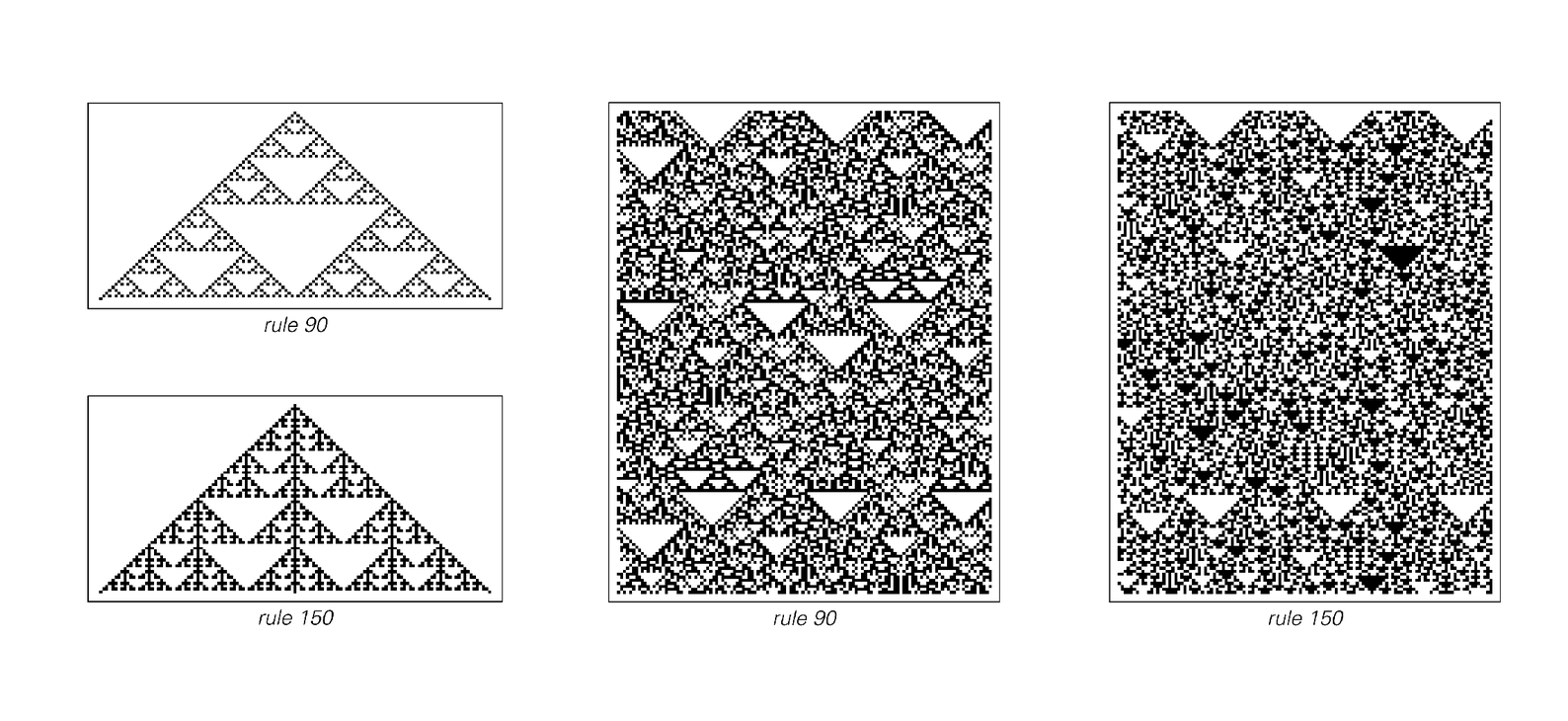the bottom of this page illustrate. As we saw on page 264, however, these patterns never in fact really correspond to more than rather simple transformations of the initial conditions. Indeed, even after say 1,048,576 steps—or any number of steps that is a power of two—the array of cells produced always turns out to correspond just to a simple superposition of two or three shifted copies of the initial conditions.

Examples of cellular automata that do allow information to be transmitted over large distances, but only in very restricted ways. The overall patterns produced by such cellular automata are essentially nested. No cellular automata of this kind can ever be universal.

Examples of cellular automata with additive rules. The repetitive occurrence of states that correspond to simple transformations of the initial conditions prevent such cellular automata from ever being universal.



